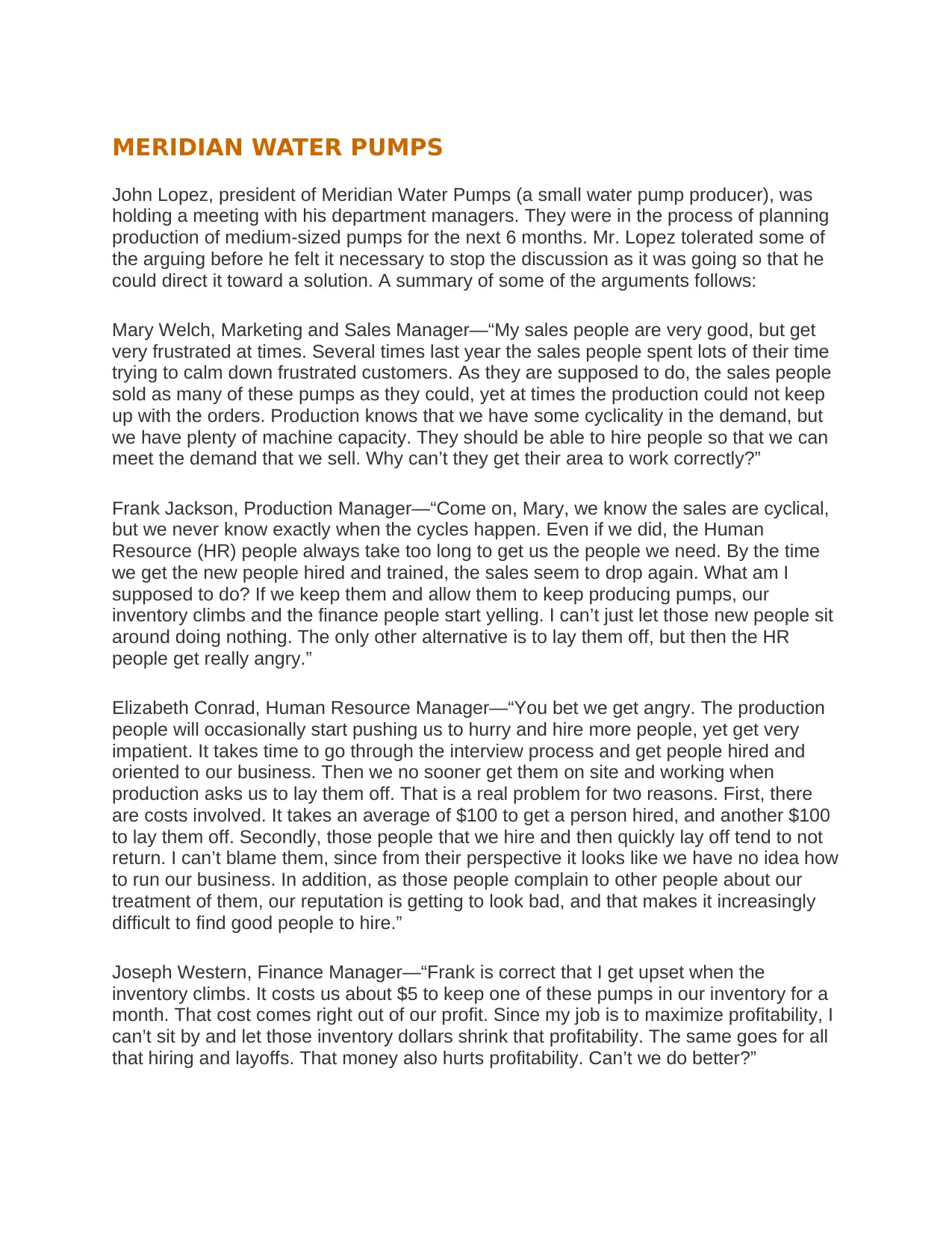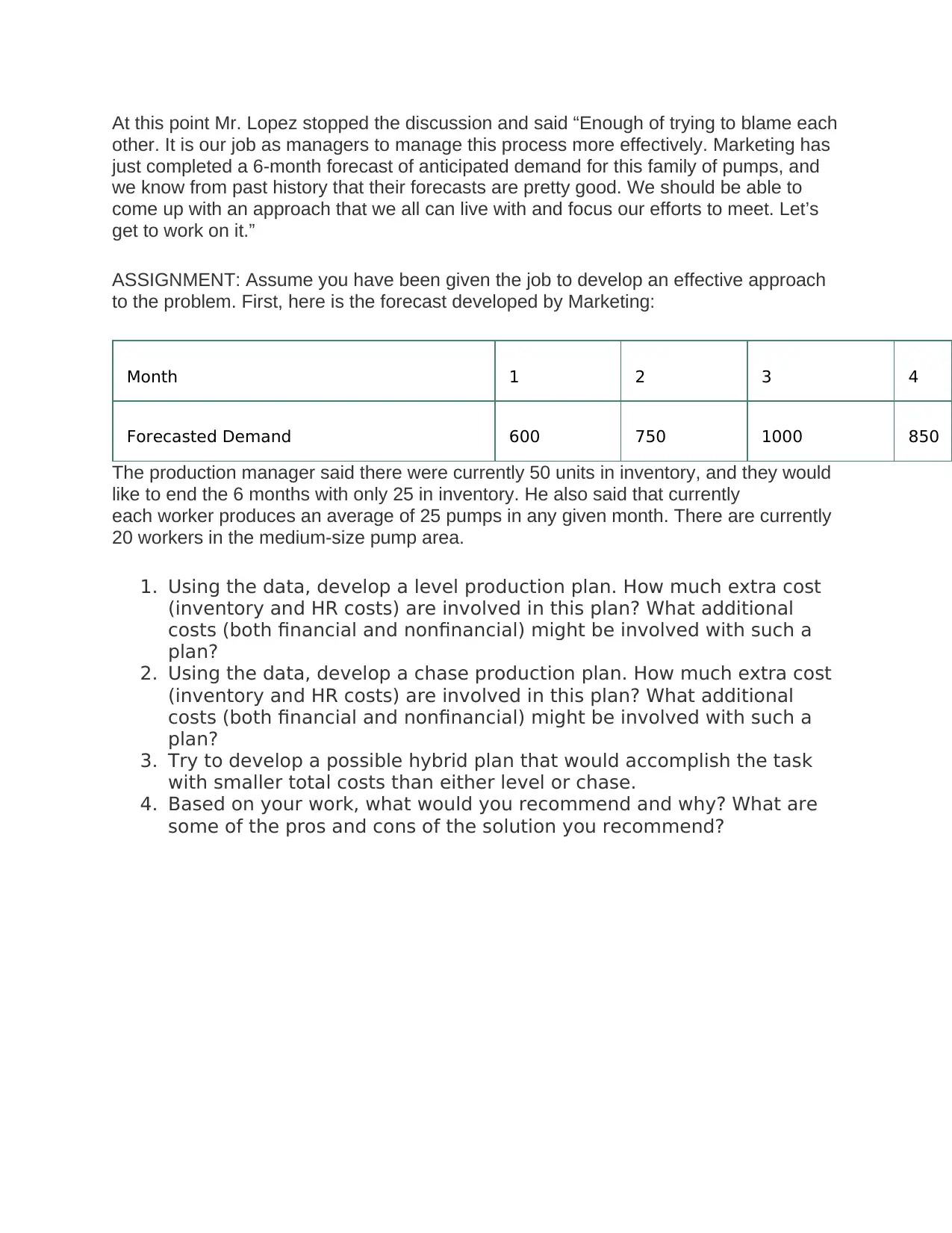Meridian Water Pumps: Production Planning Analysis Project Report
VerifiedAdded on 2019/09/26
|2
|947
|111
Project
AI Summary
This assignment involves developing and analyzing production plans for Meridian Water Pumps, a small water pump producer facing fluctuating demand. The project requires the creation of level, chase, and hybrid production plans based on a six-month demand forecast. Students must calculate the associated costs of each plan, including inventory and human resource expenses, and consider additional financial and non-financial implications. The analysis includes determining the number of workers needed each month, the impact on inventory levels, and the costs of hiring and layoffs. The ultimate goal is to recommend a production plan that minimizes costs while effectively meeting demand, considering the pros and cons of the chosen solution. The project highlights the importance of balancing production capacity, inventory management, and workforce stability to optimize profitability and operational efficiency.
1 out of 2




![[object Object]](/_next/static/media/star-bottom.7253800d.svg)